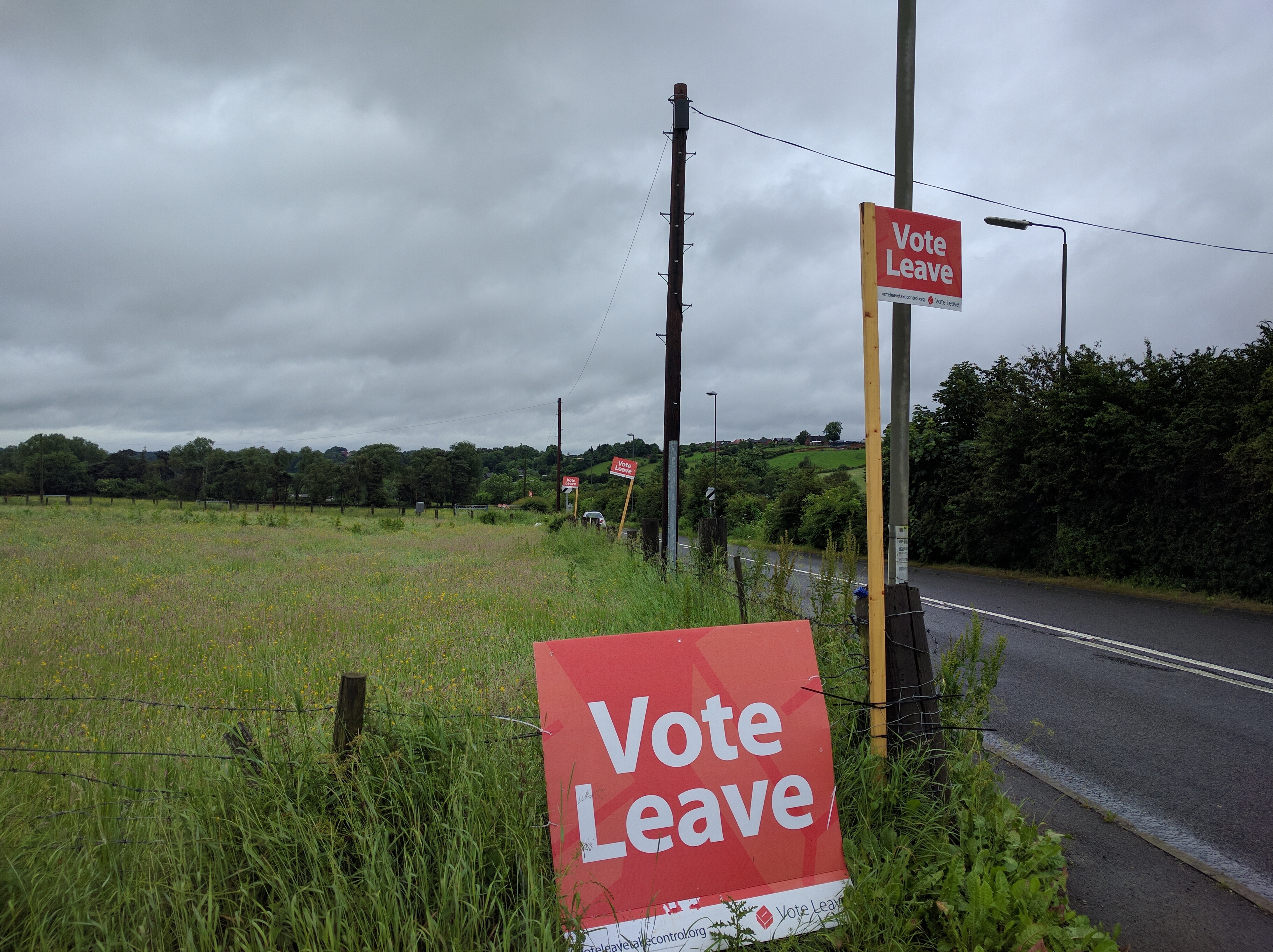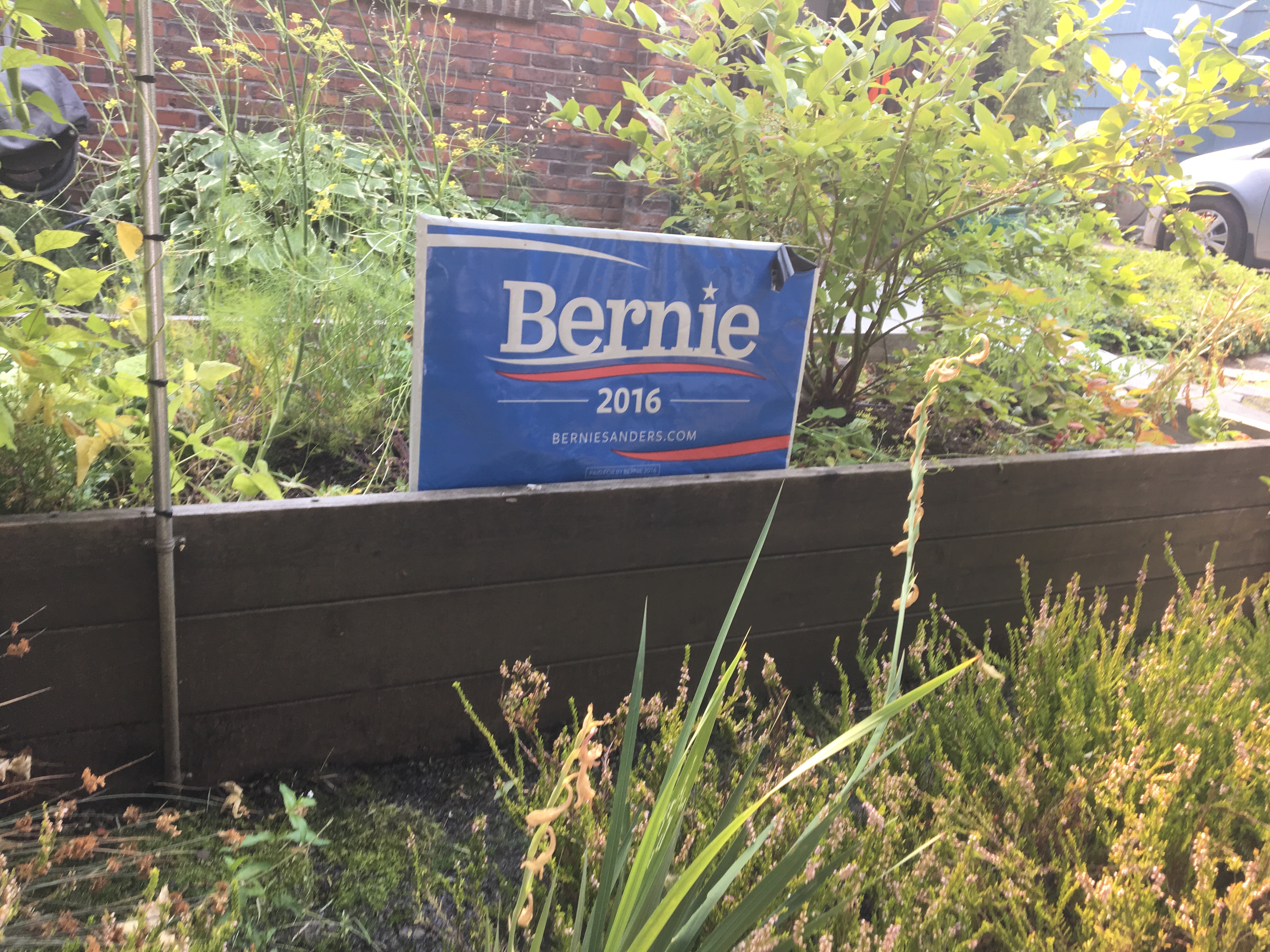Lawn Sign on:
[Wikipedia]
[Google]
[Amazon]
Lawn signs (also known as yard signs, bandit signs and placards, among other names) are small advertising signs that can be placed on a street-facing
 In addition, it gives the requester a
In addition, it gives the requester a

lawn
A lawn is an area of soil-covered land planted with grasses and other durable plants such as clover which are maintained at a short height with a lawnmower (or sometimes grazing animals) and used for aesthetic and recreational purposes. L ...
or elsewhere on a property to express the support for an election
An election is a formal group decision-making process by which a population chooses an individual or multiple individuals to hold public office.
Elections have been the usual mechanism by which modern representative democracy has opera ...
candidate, or political position, by the property owner (or sometimes to promote a business). They are popular in political campaign
A political campaign is an organized effort which seeks to influence the decision making progress within a specific group. In democracies, political campaigns often refer to electoral campaigns, by which representatives are chosen or referend ...
s in the United States and Canada.
Placement
Lawn signs are often also placed nearpolling place
A polling place is where voters cast their ballots in elections. The phrase polling station is also used in American English and British English, although polling place is the building
s on election day, although in most jurisdictions, there are legal restrictions on campaigning within a certain distance from a voting facility. In most states, there are also restrictions on where these signs can be placed. There are some residential areas that have ordinances prohibiting any posting of yard signs.
The signs are typically placed close to the road for greater visibility. In most highways a sign may not be erected so that the part of the sign face nearest a highway is within five feet of the highway's right of way line.
Signs come in various shapes and sizes, but are most often rectangular and between 12 and 40 inches on each side. They are usually produced in packages that include lawn sign wires since most of these lawn signs need to be placed on a grass or dirt surface.
Types
H-frame
A common type of yard sign frame is the "H-frame". The wire frames usually have at least two tines that can be inserted into the flutes of corrugated plastic signs. The tines on the other end of the frame can be inserted into the ground. A single or double crossbar between the two tines adds strength and makes the entire frame one single unit. It also prevents the sign face from sliding down the tines.I-frame
The I-frame is essentially an H-frame without a crossbar linking the two legs. Each leg may have an abutment that acts as a stop to prevent the sign from sliding down.Political importance
Political scientist Mel Kahn states that lawn signs help build name recognition for candidates. Supposedly, each sign represents 6–10 votes for the candidate. However, veteran political organizers hate the task of handing out yard signs, because they believe that time spent on procuring and distributing yard signs could be better used on other voter registration andget out the vote
"Get out the vote" or "getting out the vote" (GOTV) describes efforts aimed at increasing the voter turnout in elections. In countries that do not have or enforce compulsory voting, voter turnout can be low, sometimes even below a third of the ...
operations. One randomized field trial found yard signs simply reminding people to vote were able to significantly increase overall voter turnout. A 2016 study found that lawn signs raise vote shares by slightly more than 1 percentage point and are "on par with other low-tech campaign tactics such as direct mail that generate ... effects that tend to be small in magnitude".
 In addition, it gives the requester a
In addition, it gives the requester a placebo effect
A placebo ( ) is a substance or treatment which is designed to have no therapeutic value. Common placebos include inert tablets (like sugar pills), inert injections (like Saline (medicine), saline), sham surgery, and other procedures.
In general ...
of doing something substantive, while not actually volunteering to help their candidate. Critics charge that "lawn signs don't vote" and dismiss their importance. Theft of lawn signs is treated like any other instance of petty theft
Theft is the act of taking another person's property or services without that person's permission or consent with the intent to deprive the rightful owner of it. The word ''theft'' is also used as a synonym or informal shorthand term for some ...
, however, signs on the rights of way in many states are considered litter and can be picked up by anyone as a public service. On several occasions, citizens who removed lawn signs on the pretext of cleaning up the clutter and eliminating driver distraction were arrested, sparking a public controversy.
The ''Wall Street Journal'' reported on a new type of yard sign designed for improved effectiveness by being cut into shapes or people to deliver a political message. The article suggests that such signs can expose 25,000 drivers per day to messages at a low cost.
Freedom of speech issues in the United States
Governments
In the last forty years, there have been two landmark cases from theSupreme Court of the United States
The Supreme Court of the United States (SCOTUS) is the highest court in the federal judiciary of the United States. It has ultimate appellate jurisdiction over all U.S. federal court cases, and over state court cases that involve a point o ...
on the topic of sign ordinances. In ''City of Ladue v. Gilleo'' (1994), a resident of Ladue
Ladue is an inner-ring suburb of St. Louis, located in St. Louis County, Missouri. As of the 2020 census, the city had a population of 8,989.
Ladue has the highest median household income of any city in Missouri with a population over 1,000.
Ge ...
sued the city after being told by city officials she had to remove a sign from her upstairs window protesting the Gulf War
The Gulf War was a 1990–1991 armed campaign waged by a 35-country military coalition in response to the Iraqi invasion of Kuwait. Spearheaded by the United States, the coalition's efforts against Iraq were carried out in two key phases: ...
. The city banned most signs within city limits but allowed the placement of for-sale signs on the lawn. The Court struck down the ordinance and held that municipal ordinances aimed to reduce visual clutter through the regulation of yard signs were inviolate of the First Amendment to the United States Constitution
The First Amendment (Amendment I) to the United States Constitution prevents the government from making laws that regulate an establishment of religion, or that prohibit the free exercise of religion, or abridge the freedom of speech, the ...
if the ordinance restricted free speech and could not pass strict scrutiny
In U.S. constitutional law, when a law infringes upon a fundamental constitutional right, the court may apply the strict scrutiny standard. Strict scrutiny holds the challenged law as presumptively invalid unless the government can demonstrate th ...
. Passing strict scrutiny, which requires that the law be narrowly tailored to achieve a compelling government interest, is an incredibly difficult standard to meet. Under the standard, ordinances are presumed to be unconstitutional.
The second landmark decision by the Supreme Court was ''Reed v. Town of Gilbert'' (2015). In ''Reed'', the Court reviewed the constitutionality of a sign ordinance in Gilbert, Arizona
Gilbert is a town in Maricopa County, Arizona, United States, located southeast of Phoenix within the city's metropolitan area. Incorporated on July 6, 1920, Gilbert was once known as the "Hay Shipping Capital of the World". It is the fifth-larg ...
, which regulated the manner signs could be displayed in public areas. The ordinance banned the display of outdoor signs without a permit. However, the ordinance included over twenty categorical exemptions. For instance, "ideological" signs could be placed in the zoning district for an indeterminate amount of time and "political" signs were allowed in the district for up to 60 days before a primary election
Primary elections, or direct primary are a voting process by which voters can indicate their preference for their party's candidate, or a candidate in general, in an upcoming general election, local election, or by-election. Depending on the ...
and up to 15 days following a general election
A general election is a political voting election where generally all or most members of a given political body are chosen. These are usually held for a nation, state, or territory's primary legislative body, and are different from by-elections ( ...
. However, “temporary directional signs relating to a qualifying event", which directed "pedestrians, motorists, and other passersby" to events hosted by non-profit organizations, could only be displayed in the district twelve hours before the start of the event and had to be taken down an hour after the event.''Reed'', slip op. at 3 (citing Gilbert, Ariz., Land Development Code, ch. 1, §4.402(P)) (internal quotations omitted). The size of the signs were also regulated depending on the category. The Court held that the signs were a content based regulation because it distinguished signs based on their topic. Under First Amendment jurisprudence, content based regulations receive strict scrutiny. The ordinance was struck down.
Despite these rulings, municipalities and state governments continue to pass unconstitutional sign ordinances which are periodically struck down by courts.
Residential associations
The yard sign protections laid out in ''Ladue'' and in ''Reed'' do not apply to many Americans because they live in a house or condominium with a restrictive covenant governed by a residential association.Brian Jason Fleming, ''Regulation of Political Signs in Private Homeowner Associations: A New Approach'', 59 VAND. L. REV. 571 (2006). Such associations are legally considered private entities that are not governed by the First Amendment. Legal scholars have advocated for the associations to be considered state actors by the courts. Under the state action doctrine, if a private actor is delegated a public function by the state, the private actor is considered a state actor and therefore governed by the First Amendment. For a function to be a public function, it must be both traditionally and exclusively or near exclusively a state function. On the other hand, one scholar has argued that the associations are "of a private nature" because of the legal principles governing the whole arrangements. Such associations are created by "private initiative, private money, private property and private law concepts", thus the associations should be able to enforce any restrictive covenant banning political signs.Uriel Reichman, ''Residential Private Governments: An Introductory Survey'', 43 U. CHI. L. REV. 253 (1976).See also
*Sign war
A sign war is a competition between two or more organizations to gain the best visibility, or simply to engage in friendly " one-upmanship". The goal may be to put up more signs than one's competitors, or it may be to put up wittier signs.
Busin ...
References
{{DEFAULTSORT:Lawn Sign Political campaign techniques Signage